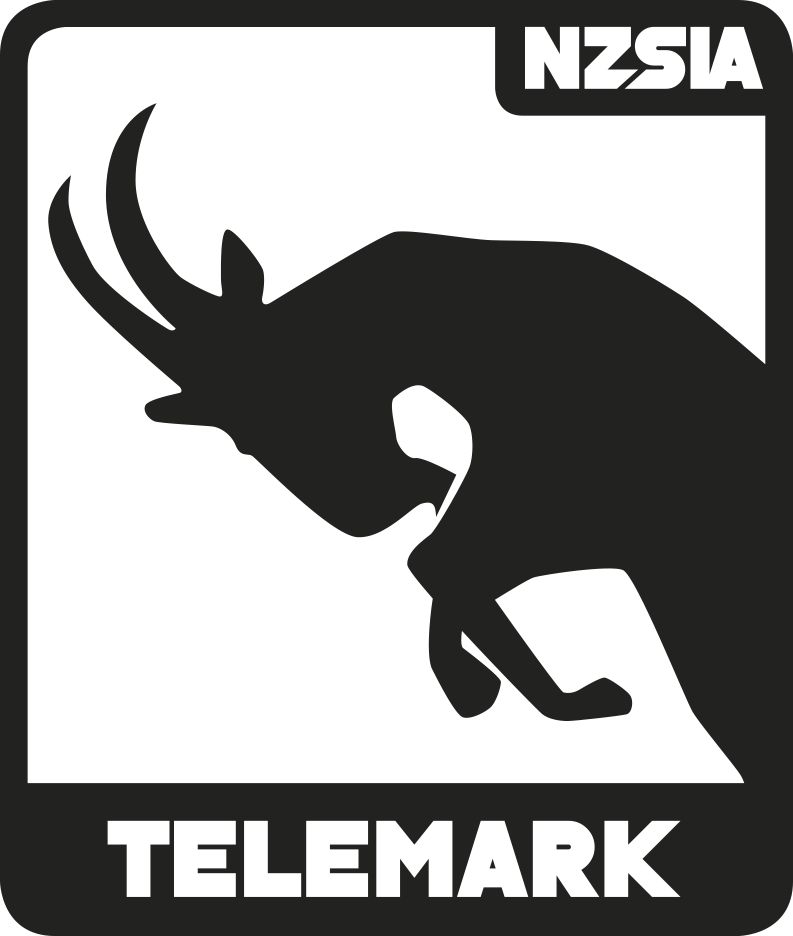Telemark skiing combines the grace of free-heel movement with the challenge of dynamic terrain. For beginners, the journey starts with learning the equipment, developing a balanced stance, and understanding how to move efficiently on flat terrain. Whether transitioning from alpine or starting from scratch, all new telemark skiers need time to adjust to the unique feel of free-heel bindings and flexible boots. Early lessons focus on mobility, balance, and stance—foundational elements that set the stage for smooth, controlled skiing. An engaging, progressive approach builds confidence while introducing the fundamental movements that underpin telemark technique.
 Telemark Stance
Telemark Stance
 What, Why, How
What, Why, How
What
The fundamental elements of the telemark stance begin with the feet:
- Feet hip-width apart and skis parallel.
- One foot positioned in front of the other, with a space between the front heel and rear foot toe of about a full boot length.
- Both knees and ankles flexed forward comfortably.
- Rear heel raised off the ski, with weight distributed on the ball of the rear foot.
- The rear femur stays vertical—not extending back past the body’s centerline.
- Body weight evenly distributed between the ball of the rear foot and the whole of the front foot, creating a stable base of support.
- Gaze forward, looking in the direction of travel.
- Hands at waist height, shoulder-width apart, with elbows slightly tucked and in line with the body.
- The core is engaged (but not tense) to support stability.
- The upper body leans slightly forward, mirroring the angle of the leading shin.
- Unlike alpine skiing, telemark skiing relies on muscular engagement rather than bone stacking for balance and control.


Why
A solid and balanced telemark stance serves as the skier’s foundation, providing the stability needed to handle increasing speeds and edge angles. This stance is what sets telemark skiing apart, enabling fluid and dynamic movement.
How
- Introduce the Stance:
- Stand hip-width apart and move one foot forward of the other.
- Emphasize weight distribution and the importance of maintaining balance.
- Mobility Drills:
- Walk forwards, backwards, and in circles with skis on to get used to the free-heel movement.
- Keep activities engaging and fun to help students feel comfortable.
- Refining the Position:
- Demonstrate, explain, and provide feedback.
- Use hands-on guidance where necessary to help students find the correct stance.
- Encourage self-discovery while ensuring proper form.
- Take time to get the stance right from the start, as it is fundamental to all aspects of telemark skiing.

When
- Blend this into the end of the warm-up before moving to sliding exercises.
- Spend sufficient time ensuring each student understands and applies the correct stance.
Where
- Teach this on a flat learner’s area, away from skier traffic.
- Ensure the terrain is stable and controlled to avoid unnecessary sliding.
- Follow the 4Cs (Control, Comfort, Confidence, Commitment).
Exercises
- Tele Hops – Perform a single hop with a two-footed landing to reinforce balance.
- Exploring Range of Motion – Have students experiment with movements while stationary to develop stability before introducing sliding.

